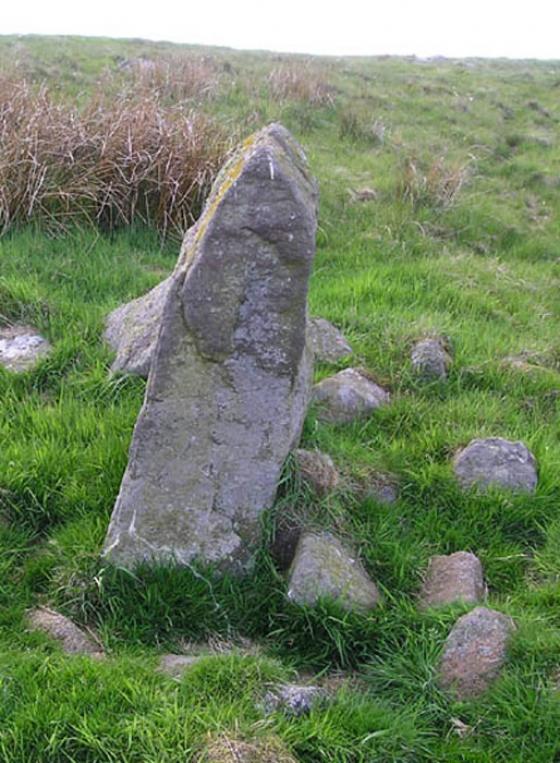Thanks to Rhiannon for putting the folklore here, it slowly galvanised me to finally get my sorry carcass ‘Up The Gyle’ and pay a visit to this far-flung edge of two countries.
There’s not much to say about the cairn that you wouldn’t be able to determine from the photo. It’s been used as a trig point and has the usual beacon sangar, unsurprising, given the spectacular views.
What did strike me about it was the variation of different kinds of stone represented in the cobbles and boulders. Were they brought from afar, were they brought in the bronze age, or have they been added by walkers on the last stretch of the Pennine Way? I’ve no idea.
I expected this place to be quiet, and was thus surprised to find I waited for over an hour before getting the place all to myself. The majority of other visitors were following the border line, some of them having completed the whole Pennine way. Kudos unto them. If you’re doing the Pennine way, you can’t really miss the thing. But if you’re coming from the east, it’s quite a decent walk up from Barrowburn, and on the path between Barrowburn and Murder Cleugh at about NT866118, there appears to be the remains of a prehistoric boundary in the form of the grounding stones of a cross dyke. I’d like to think it’s BA, there are quite a few of those hereabouts. As it’s not been recorded anywhere I’ve been able to find (Must get around to informing the CA about it), I can’t be sure. I also took no photos, nor did I gps the location. Lazy me.
It’d be easy to be so taken by the view from it’s place on top of Windy Gyle, that you’d assume the view was the reason for the choice of location for the cairn, and the handful of satellite cairns nearby. But I reckon the exact location on The Gyle is possibly influenced by the Routin Well and the strange chasm of Scotchman’s Ford. It would be redundant to list intervisible monuments, as there the extensive view means you could probably see half of the hill top cairns in Northumberland, and an equal number of the ones in what is now Scotland. Excellent views of Cheviot and Simonside for those who like a nice bit of ‘Sacred Hill’.
I had a quick skank about for the stone that used to be listed on the county SMR as a standing stone, in the area marked on the map as ‘Split the Deil’ (A peculiar name for a place where there’s nothing in particular, which no-one seems to be able to agree upon the etymology of). I found zilch, but it made for a nice excuse to hop about in the heather.
My return route was down what looks like a drove road, following the path amrked on the map down the western side of Wardlaw Burn, which comes out at Rowhope. I reckon this would be the sensible place to park a car for those who drove up this way. For those of a cycling bent, the Border County ride passes within spitting distance.



















































